Dear Friends,
I went to the Whitney Museum’s exhibition of Jasper Johns’ work a few weeks ago and haven’t stopped thinking about the flag paintings. Maybe it’s because my friend Stefanie--who goes to exhibitions like it’s her job, seeking out the popular and the complex, the mainstream and the counterculture, and then texts me to recommend or ask what I think--told me that she just doesn’t get the flag paintings.
How could she not get the flag paintings? In my mind, I immediately flashed to Map, the flag painting from 1961 now in the Whitney exhibition, but usually at the Museum of Modern Art. I’ve seen it hundreds of times. Her comment triggered me a bit into my go-to “I’ll figure it out and rescue her,” a high-functioning position that I fall into, the polar opposite of solace. She wasn’t even asking me to explain, but have books and Google and I’ll save the day: Johns traded in direct transposition of common images and signs, he favored “the things the mind already knows,” and starting in about 1955 (he was in his twenties), he took the art world by storm, turning his back on hard-to-read abstract expressionism by starting to use maps, targets, stenciled alphabets and numbers. The curators at the Whitney tell us that Johns “had no particular interest in the nationalistic association of these subjects” yet is it hard for me, at least, to look at the maps and not think of politics and states rights and dividing lines and ideas. Johns made the map paintings during the Cold War, through the Civil Rights Movement, the Vietnam War. When he made the one now owned by MoMA, John F. Kennedy had just been elected president and the painting surely evoked a messy but glorious land, from sea to shining sea. Now, that same painting is just as relevant, portraying a country just as messy if not moreso, politically, climatically, philosophically--listen to native American artist Jaune Quick-to-See Smith’s audio for one interpretation of the dark side of Johns’s map paintings.
So much work and I’ve barely scratched the surface of what John's scholars know and think and understand, and then I remember why I love the flag paintings, and never even thought to study them. My viseral response to Map reminds me of grade school, family road trips from Illinois to Florida, that Michigan looks like a mitten, and Oklahoma like a gun. My just-looking and not-thinking-so-much reaction is to the direct color--cadmium red and yellow and cobalt blue, of course mixed and finessed, but still very direct hues that feel honest and unadulterated. My eye hangs on wild California, looking part land and part sea, drippy Louisiana, eradicated South Carolina, hard to find New Hampshire, Vermont, and Maine. What is going on in Kansas, grey with an action-packed stroke of charcoal, like a nuclear explosion somewhere near Salina? Some states are called by nicknames, like Penn and Mich and Wis and Miss, others formally acknowledged with surnames and all--North Dakota, South Dakota, New York. Neighboring places--British Columbia, Saskatchewan, Ontario, Baja Calif, Chihuahua, Gulf of Mexico, Atlantic Ocean--are part of the mass, same colors, shapes naming places, not like the puzzle I did as a kid in which the surrounding land and sea was fixed and only the tiny states were pieced for insertion. And there you have it, when my mind relaxes, I can actually admit to you that I love Johns’s flag paintings because they remind me of the puzzles I played with as a child, the ones that snuck Alaska and Hawaii in the lower left corner, just under California.
My solace-filled response is not necessarily filled with understanding of Johns’s full intent. I can figure that out if I put my mind to it. My solace-filled response is a memory, a rich, colorful memory. And that’s ok.
If I’ve peaked your interest in the flag paintings, do see the exhibition at the Whitney, and the other half of the show at the Philadelphia Museum of Art. The shows mirror one another--mirroring was a concept at core of Johns’s creations--and while the flag paintings are in New York, the Philadelphia mirror gallery is filled with number pictures.
And here is for Stefanie, the brilliant writer Holland Cotter in NYT: “When Johns’s flags first appeared, though, what they changed forever was American art. They made gestural abstraction begin to look operatic and sappy and uncool. Their tightrope walk between depicting flags and actually being flags threw the art-life divide, and values attached to it, into crisis, a little the way NFTs do today. And while the flag paintings’ inexpressive, deadpan air was, for some viewers, an existential problem, for others it was a solution. Expressively, emotionally, these paintings seem to give nothing away; indeed, seemed to have nothing to give.”
Take A Walk
Jasper Johns loves nature. The art critic Deborah Solomon, John’s biographer, starts her review of the Whitney/Philadelphia exhibition, with notes from a recent visit to the artist’s home: “ I arrived at the stone house in Sharon, Conn.,” she writes, “and found Jasper Johns outside on the lawn, tending to a massive oak tree. An infestation of gypsy moths was visible on the trunk; gauzy deposits of tiny eggs were imperiling the tree’s health. Johns, who was dressed neatly in khaki pants, a turquoise linen shirt and a pair of heavy yellow gloves, was using his hands to scrape the eggs off the bark. The moths’ gray wings fluttered wildly as they tumbled to the ground. In a summer when so much of the world was still reeling from Covid-19, it was heartening to think that at least a towering oak might be saved.”
And onward
The singer, song-writer, Broadway musical star Gavin Creel recently gave a performance at the Metropolitan Museum, the roll up of his residency there looking at art. Just walking and looking. At the start of his performance, called Walk on Through, he admits to being totally out of his element just standing in front of a painting or sculpture. And then he realized it was simple, he said: “Stop, Breathe, Look.” Brilliant.
Until next time, keep walking and looking, slowly and with curiosity and courage,
Carrie








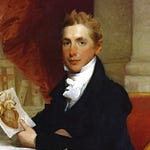

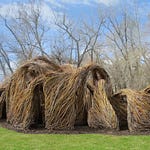
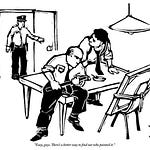
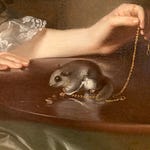
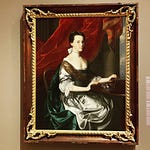
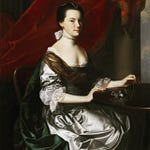
Share this post